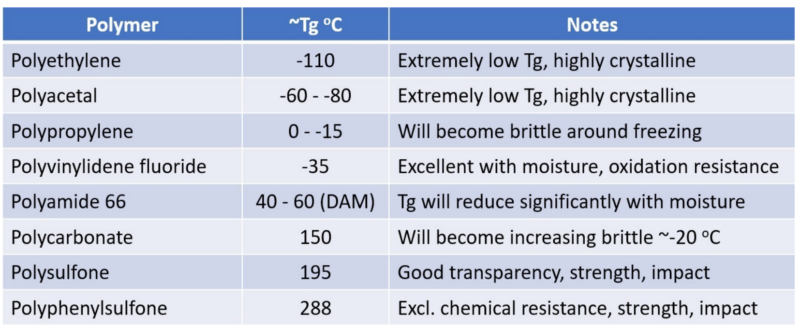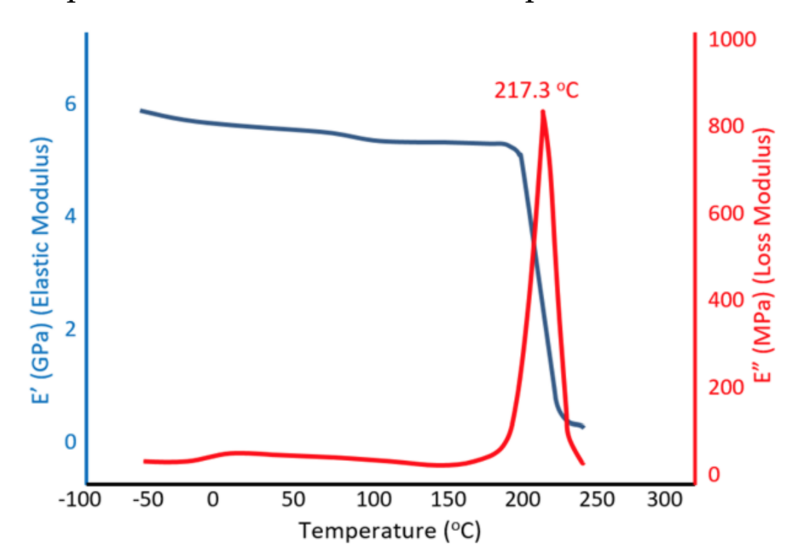
Figure 1 – Plastic assembly that was exposed to a high temperature.
We all learned at a very early age that plastics cannot survive in temperatures as high as metals. Plastics will melt or soften at a relatively low temperature, when compared to other materials. Figure 1 shows an assembly that was exposed to conditions greater than the plastic’s melt temperature. However, it is not just the high-end temperature that defines the range we need to consider when selecting a material for an application. When choosing a plastic for an application we likely need to understand how it will perform at very low temperatures as well. This article will review temperature considerations when choosing a plastic material for your application.

Figure 2 – Relative high temperature range of various plastic.
The mechanical behavior of all plastics will change significantly, within the temperature range we live in or expect plastic materials to survive. Here, “significantly” means in most situations the change in properties will be enough that they need to be accounted for in the plastic part design. The vast number of different plastic materials provides the engineer/designer with many options to choose from. Figure 2 provides an illustration of the upper limits of the temperature range of some common plastic materials. The material selection process should not end with this diagram. When navigating through the plastic material selection process it is important to understand more than just the high-end use temperature. Knowing how the material will behave over the entire expected temperature range the part will be used, can be critically important.
Testing for Mechanical Properties
The two primary testing methods for measuring and understanding the change in mechanical properties with temperature are dynamic mechanical analysis (DMA) and tensile testing. Each test provides necessary information for making an informed and appropriate material selection. Though this article is too brief to provide a full explanation of each test, the following highlights are given:
DMA
- Provides the storage (elastic) and loss modulus of the plastic over a large temperature range.
- The primary method used to determine the glass transition temperature of a plastic.
- Using time-temperature superposition (TTS) can be used to provide insight into the lifetime (creep) of the plastic part.
Tensile Testing
- Provides the short-term yield point, strength and elongation at break at discrete temperatures.
- Most utilized mechanical testing technique by industry.
Figure 3 shows DMA results and Figure 4 tensile testing results, for a 33% glass-filled polyamide 66, Zytel 70G33Hs1L over a large temperature range in both a dry-as-molded (DAM) and conditioned state [1]. These figures illustrate how significantly the properties will change over a common temperature ranges that this material may experience. One of the keys to successfully choosing a plastic material for an application is understanding what the changes in properties will be, and their effect on part performance. For instance, the tensile testing highlights that the modulus and strength of this material have decreased significantly as the temperature increases from room temperature. This information can be used for “back of the envelope” calculations or in a finite element analysis (FEA).
![Figure 3 – Modulus of nylon 66 Zytel 70G33HS1L over a large temperature range (dry and conditioned) [1].](https://madisongroup.com/wp-content/uploads/2023/05/Figure-3-1-800x328.png)
Figure 3 – Modulus of nylon 66 Zytel 70G33HS1L over a large temperature range (dry and conditioned) [1].
![Figure 4 – Tensile test results of polyamide 66 Zytel 70G33HS1L over a large temperature range (dry and conditioned) [1].](https://madisongroup.com/wp-content/uploads/2023/05/Figure-4-1-800x435.png)
Figure 4 – Tensile test results of polyamide 66 Zytel 70G33HS1L over a large temperature range (dry and conditioned) [1].
Perhaps the most important thermal property for polymeric materials is the glass transition temperature (Tg). The glass transition is a reversible transition in the amorphous regions of the polymer where the molecules can move more freely. In general, when the service temperature increases and passes the glass transition temperature, the amorphous region transitions from being hard/stiff to being more compliant and rubbery-like. For amorphous polymers, the Tg is the softening point that needs to be exceeded in order to be processible. It is obvious that an amorphous material will not survive if the temperature conditions approach the polymer’s Tg. On the other hand, it is quite common for operating conditions to go through the Tg of a semi-crystalline polymer. Because the mechanical properties will change drastically at the Tg, it is critically important that one knows the plastic’s Tg and the expected change in properties.

Table 1. Glass transition temperatures of various plastics.
There are several methods that can be used to determine the Tg of a plastic material. Unfortunately, they will all show slightly different results. However, using the same technique will provide consistency and comparative results. The method that this author uses is the relative maximum of the loss modulus when measured using dynamic mechanical analysis (DMA). Figure 5 shows the storage and loss modulus for a polyether sulfone polymer [2]. The local peak in the loss modulus at 217 ° C is the Tg for this material.

Figure 5 – The storage and loss modulus of polyether sulfone showing the Tg at 217 °C.
A Quick Note on Thermal Expansion
It is important to take into consideration the thermal expansion and contraction the plastic part will experience over the temperature range it will live in. Most plastics will expand three to ten times more than metal. Constraining a part that is expected to go through large temperature swings can result in the generation of significant stresses and/or deformation. These stresses can easily be large enough to cause cracking in the part.
References: [1] www.campusplastics.com. [2] Sepe, M., Dynamic Mechanical Analysis, PDL (1998).
